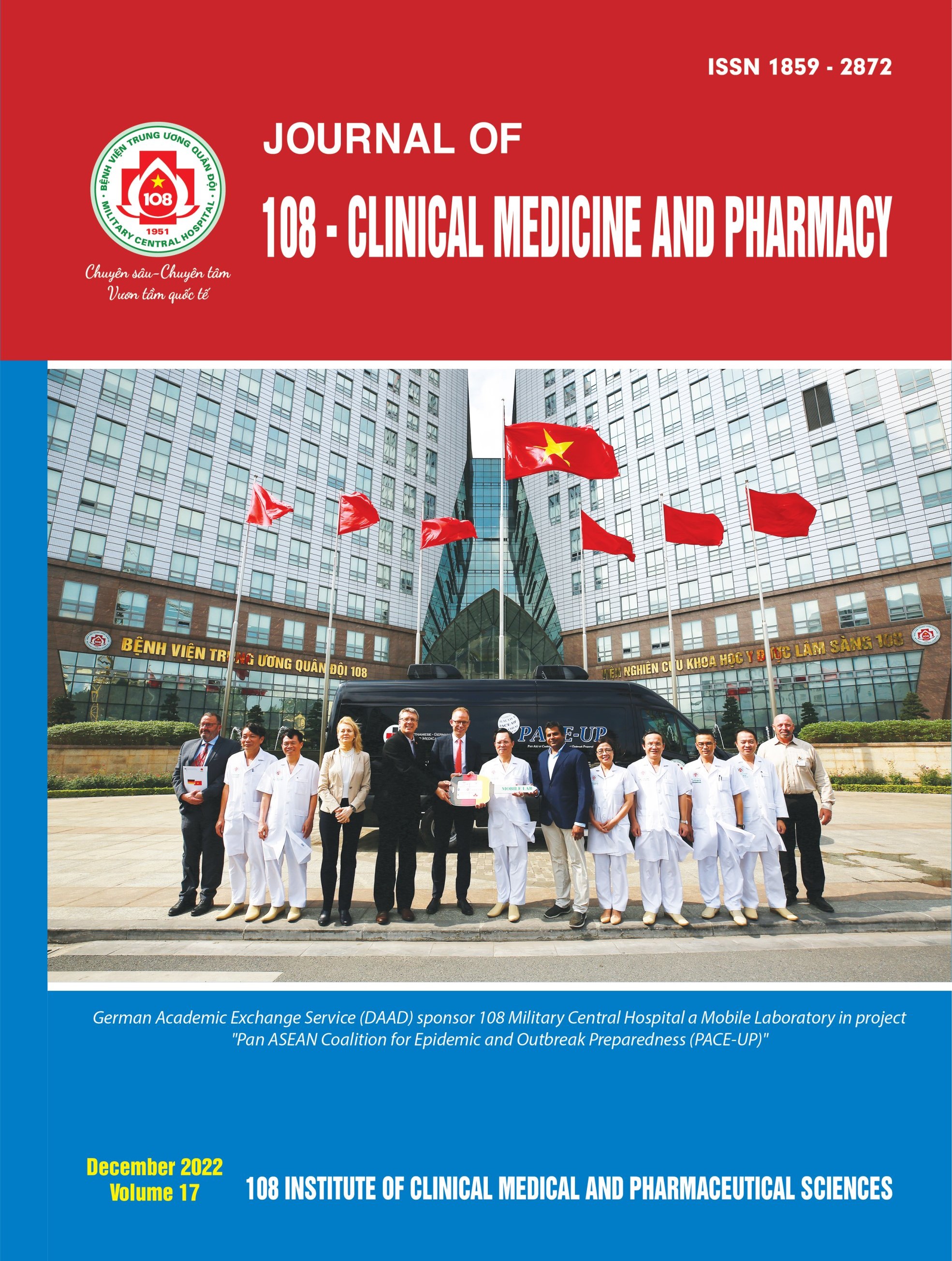A case of successful intraventricular thrombolysis and external ventricular drain treatment in primary intraventricular hemorrhage
Main Article Content
Tóm tắt
Intraventricular hemorrhage (IVH), accounting for about 45% of acute spontaneous intracranial hemorrhage (ICH), is often associated with obstructive hydrocephalus and poor functional outcomes [1] [2]. Obstructive hydrocephalus and increased intracranial pressure are common after IVH because of an obstruction of normal cerebrospinal fluid (CSF) flow and absorption by blood clots. An external ventricular drain (EVD) - a temporary system that permits drainage of cerebral spinal fluid (CSF) from the ventricles to an external closed system) has been indicated for patients with IVH with hydrocephalus and neurologic decline [3]. However, the treatment with EVD alone is often not sufficiently effective due to a likely potential obstruction of the catheter by blood clots. Intraventricular fibrinolysis (IVF) via the extra-ventricular drain has been known to speed clot resolution and maintain the EVD functionality [4]. However, it is also possible that the risk of hemorrhage, infection, and CFS pleocytosis may be increased with IVF therapy, but these have not been demonstrated so far. We report a clinical case of primary IVH with acute obstructive hydrocephalus, successfully treated with a combination of EVD and direct intraventricular injection of rt-PA into the lateral ventricles. This treatment contributes to confirm that combination of EVD and thrombolysis could be considered as a treatment option for selected patients.
Article Details
Các tài liệu tham khảo
2. Steiner T, Diringer MN, Schneider D, Mayer SA, Begtrup K, Broderick J et al (2006) Dynamics of intraventricular hemorrhage in patients with spontaneous intracerebral hemorrhage: Rrisk factors, clinical impact, and effect of hemostatic therapy with recombinant activated factor VII. Neurosurgery 59(4): 767-773 discussion 73-74.
3. Naff NJ (1999) Intraventricular hemorrhage in adults. Current treatment options in neurology 1(3): 173-178.
4. Staykov D, Bardutzky J, Huttner HB, Schwab S (2011) Intraventricular fibrinolysis for intracerebral hemorrhage with severe ventricular involvement. Neurocritical care 15(1): 194-209.
5. Darby DG, Donnan GA, Saling MA, Walsh KW, Bladin PF (1988) Primary intraventricular hemorrhage: Clinical and neuropsychological findings in a prospective stroke series. Neurology 38(1): 68-75.
6. Passero S, Ulivelli M, Reale F (2002) Primary intraventricular haemorrhage in adults. Acta neurologica Scandinavica 105(2): 115-119.
7. Tuhrim S, Horowitz DR, Sacher M, Godbold JH (1995) Validation and comparison of models predicting survival following intracerebral hemorrhage. Critical care medicine 23(5): 950-954.
8. Conway J, Oshiro E, Piantadosi S (1998) Ventricular blood is an admission CT variable which predicts poor clinical outcome after aneurysmal subarachnoid hemorrhage. American Association of Neurological Surgeons Annual Meeting, Philadelphia.
9. Nyquist P, Hanley DF (2007) The use of intraventricular thrombolytics in intraventricular hemorrhage. Journal of the neurological sciences 261(1-2): 84-88.
10. Naff N, Williams MA, Keyl PM, Tuhrim S, Bullock MR, Mayer SA et al (2011) Low-dose recombinant tissue-type plasminogen activator enhances clot resolution in brain hemorrhage: The intraventricular hemorrhage thrombolysis trial. Stroke 42(11): 3009-3016.
11. Graeb DA, Robertson WD, Lapointe JS, Nugent RA, Harrison PB (1982) Computed tomographic diagnosis of intraventricular hemorrhage. Etiology and prognosis. Radiology 143(1): 91-96.
12. Steiner T, Kaste M, Forsting M, Mendelow D, Kwiecinski H, Szikora I et al (2006) Recommendations for the management of intracranial haemorrhage - part I: spontaneous intracerebral haemorrhage. The European Stroke Initiative Writing Committee and the Writing Committee for the EUSI Executive Committee. Cerebrovascular diseases (Basel, Switzerland). 22(4): 294-316.
13. Tuhrim S, Horowitz DR, Sacher M, Godbold JH (1999) Volume of ventricular blood is an important determinant of outcome in supratentorial intracerebral hemorrhage. Critical care medicine 27(3): 617-621.
14. Goh KY, Poon WS (1998) Recombinant tissue plasminogen activator for the treatment of spontaneous adult intraventricular hemorrhage. Surgical neurology 50(6): 526-531; discussion 31-32.
15. Hanley DF, Lane K, McBee N, Ziai W, Tuhrim S, Lees KR, et al (2017) Thrombolytic removal of intraventricular haemorrhage in treatment of severe stroke: Results of the randomised, multicentre, multiregion, placebo-controlled CLEAR III trial. Lancet (London, England) 389(10069): 603-611.
 ISSN: 1859 - 2872
ISSN: 1859 - 2872
